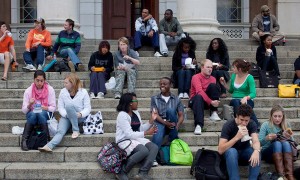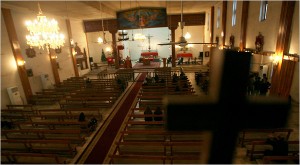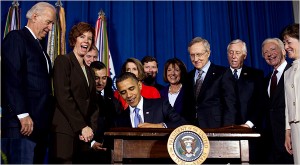from CNN
I’ve thought for some time that if more Americans had personal contact, even friendships, with their fellow Americans who are Muslims there might be less mistrust and misunderstanding about the role Islam plays in their lives.
The years have convinced me that interfaith dialogue, particularly the one-on-one variety, is a more viable way to break down barriers between people than large-scale efforts.
Now, before we go any further: Yes, within a worldwide population of more than 1 billion Muslims (which include a few million in the United States) there are those who, for a variety of reasons, hate the United States, would do it harm or support such action.
But when the subject comes up, the American Muslims I’ve met – whether they were born here, emigrated from traditionally Muslim nations or converted from other faiths – remark how America, even amid the tensions of recent years, affords them the freedom to live, work, study and raise their children, as their neighbors do, and, importantly, worship in the way they choose, as their neighbors do.
Young people tend to be less-jaded and, as such, more open to getting to know “the other.”
As an example, I’ll point to our daughter (we’ll call her “M”), who recently made a trip home from college and brought along a friend (we’ll call her “A”).
“M” is proud of her Jewish heritage. “A” is equally proud of being Muslim; so much so that she wears a hijab. They make quite a pair and not just because they have a similar sense of humor.
Their friendship started when “M” and “A” were paired up for a project in their mass communications class at a small state university in the South. On their way to the library, “A” asked if “M” would have a problem working with her because, well, she’s Muslim.
We, “M’s” parents, figured she laughed and said something like, “Let me tell you, . . .”
There was the trip to Spain and Morocco that M and her mother took as part of a delegation of Christians, Muslims and Jews, which included visits to mosques in both countries. There was the visit to the Seeds of Peace camp in Maine that her parents subjected her and her siblings to while on vacation. There are her mother’s myriad interfaith activities, ranging from her work at a 24-hour faith-based cable television channel to a Jewish-Muslim women’s baking group.
That initial conversation lasted some two hours.
The two young women must have made quite a sight when they attended the Jewish festival in the city where they go to school. “M” wore a t-shirt that read “Shabbat. Just Do It” with the swoosh logo. “A” wore, well, her hijab. There were stares, but these young women did not care.
The point is that, as friends, they talk about each other’s religion and respect the role it plays in each other’s life.
“M” once declared interfaith activity to be her mother’s domain. Now we, her parents, chuckle at that memory and take pride in having a daughter who looks past stereotypes. When you get to know the “other” it becomes harder to accept generalizations and easier to look at the individual.
I hesitate to conclude with a comment by the President of the United States, knowing how his own religious heritage has at times been a point of controversy, but in India recently President Obama made the following relevant comment in a speech to college students:
“Whatever may be your religion we can treat each other with respect as per some of the universal principles. Young people like you can make a huge impact in reaffirming that you can be a strong observer of your faith without putting somebody else down. How you respond to each other is probably as important as any speech a president makes. It’s necessary in a world that’s getting smaller, where more and more people of different backgrounds, race and ethnicities are interacting, innovating and working.”
The original article can be found here: http://religion.blogs.cnn.com/2010/11/27/my-take-how-real-interfaith-dialogue-works/



 WASHINGTON — The military’s longstanding ban on service by gays and lesbians came to a historic and symbolic end on Wednesday, as
WASHINGTON — The military’s longstanding ban on service by gays and lesbians came to a historic and symbolic end on Wednesday, as